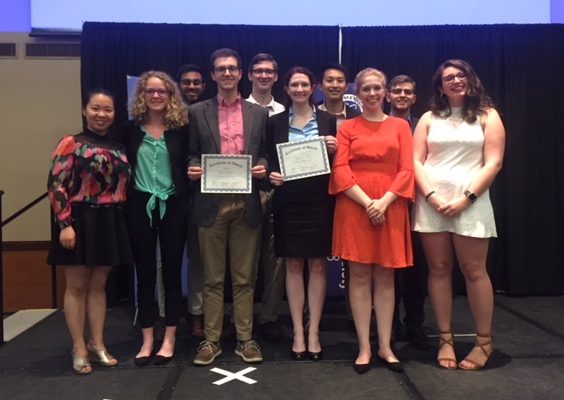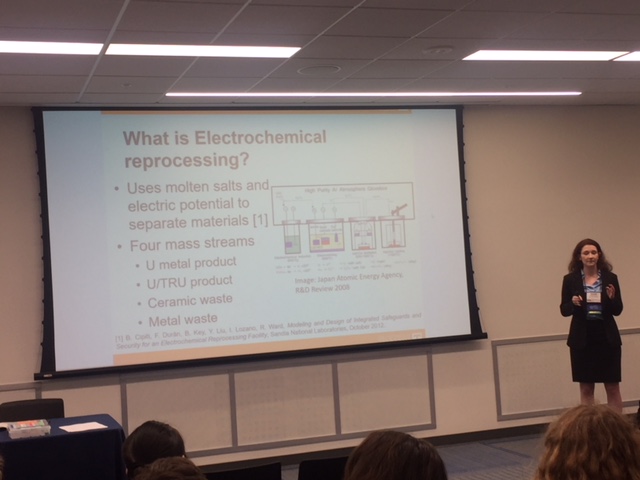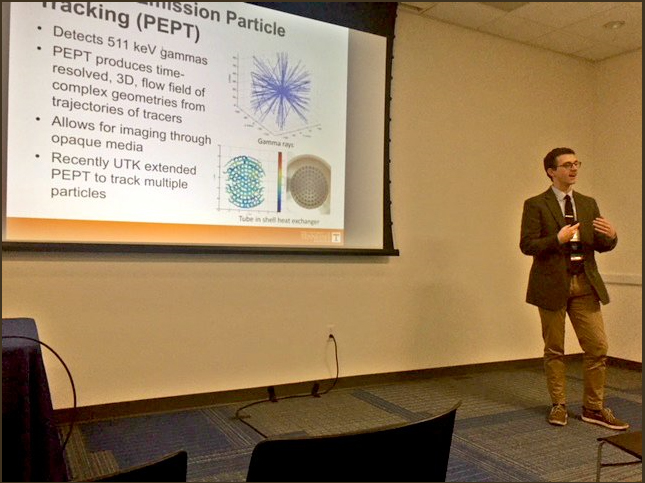
A total of ten undergraduate and graduate students recently represented the UTNE Department at the American Nuclear Society Conference in Gainesville, Florida. Congratulations to Amanda Bachmann, Matthew Herald, and their team members for winning awards for the Best Student Paper.
Amanda Bachmann – Best Student Paper
(Team members Nathan Gilliam, Jonathan Mitchell, and Michael Cooper)
Work entitled, “Investigating Isotopic Concentration Variability in Used Nuclear Fuel”
The basis of the project is to expand the capabilities of the Separations and Safeguards Performance Model (SSPM) from Sandia National Lab for its use as a nonproliferation safeguard for Electrochemical reprocessing of fuel. It is funded through the DOE Office of Nuclear Energy’s Nuclear Energy University Program. It was a part of the Nuclear Nonproliferation track for the American Nuclear Society Conference.

Matthew Herald – Best Student Paper
Work entitled, “X-Means Clustering Implementing the Gap Statistic for Multiple Positron Emission Particle Tracking”
The main basis is that when performing a PEPT Measurement, particles are always simultaneously entering and leaving the field of view for a scanner. Thus, the number of particles in the scanner is constantly changing. The number of particles is important to know because the clustering algorithm used must be given this number. Herald’s work set out to address how to find the number of clusters in an unsupervised way so that user never has to tell the algorithm this information. The idea is run the clustering a number of time with the number of clusters increasing each time. For each run, the “togetherness” of the clusters are computed using the gap statistic. The best score of the gap statistic should occur when the number of clusters guessed equals the number of cluster actually contained in the field of view. The cluster centers are then computed and recorded. This process is repeated each time step. It was funded by grant from the National Nuclear Security Administration through Professor Arthur Ruggles.
